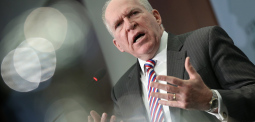Can a New Mapping Tool Protect Indigenous Land Rights?
- By Siobhán O'GradySiobhán O'Grady is a staff writer at Foreign Policy. She joined FP from the Houston Chronicle's Washington, D.C. bureau and has lived in Morocco and Cameroon.
- siobhan.ogrady
- @siobhan_ogrady
-






Roughly 1.5 billion indigenous people or members of local communities live or use more than 65 percent of the world’s land.
But the vast majority of that land is not legally recognized as their own, which at times forces indigenous populations into uphill battles against corporations looking to profit from their natural resources by drilling for oil or cutting down forests for timber.
This week, more than a dozen coalitions of indigenous people and land rights organizations teamed up to launch a new mapping system that, for the first time, offers an overview of lands belonging to or used exclusively by indigenous people. It also marks land that is shared between indigenous people and more diverse communities.
According to a statement from the World Resources Institute, which helped develop the map, the platform was “created to fill a critical gap in indigenous and community rights and make clear that these lands are not vacant, idle or available to outsiders.” For that reason, the indigenous and shared community lands mapped are identified by their legal status. Each community featured is labeled as either formally recognized, in the process of being formally recognized, or lacking recognition altogether.
The map, which was launched in its beta phase on Tuesday, is still a work in progress.
But according to the data available at the time of the project’s launch, nearly 80 percent of Africa’s landmass is held by indigenous communities under customary tenure. Only 21 percent of that land is legally recognized as belonging to indigenous people.
And in Australia, Aboriginal communities are waiting on an additional 41.6 percent of the nation’s landmass to be recognized as their own. Currently, 32.5 percent of the country’s land recognizes aboriginal rights.
The map is available for further exploration here.
Photo credit: screen shot
























































































































































































































